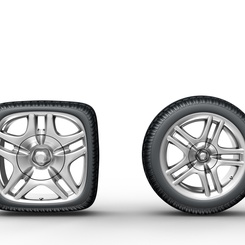Professor Emmanuelle Le Nagard explains how ‘perceived obsolescence’ can be a double-edged sword for firms like Apple.
___
When the iPhone 7 hit shelves in September, 2016, diehard fans lined up outside stores, eager to get their hands on the latest Apple product. Many others, however, felt a little under-whelmed. Was the iPhone 7 a real innovation? Or was it in some sense a ploy to make us want to trade-up a perfectly good iPhone 6?
Indeed, Apple is just one firm among many that have been able to leverage what we call ‘perceived obsolescence’: by introducing new versions of their products to the marketplace, Apple has successfully instilled in many consumers a desire to trade-up and replace older products that are otherwise fully functional.
Many technology firms have been able to trigger renewal decisions in a similar fashion, fostering feelings of ‘perceived obsolescence’ by periodically introducing incremental innovations. These newer products tend to have higher social value, which is especially important for visible products like smartphones and tablets.
The Apple example, however, also underscores the risks associated with leveraging ‘perceived obsolescence’:
- Your consumers might feel manipulated: when innovations are too incremental and product launches too close together, manufacturers may appear to be putting unjustified pressure on consumers to upgrade.
- Your target audience might not be listening: not all consumers are equally receptive to feelings of perceived obsolescence and many won’t care if their product isn’t "state-of-the-art".
- Your brand might suffer - let alone any feelings of manipulation, too many incremental innovations will be associated with waste and a negative environmental impact.
Watch the video: perceived obsolescence, explained in 3 minutes:
Video Script:
Every year, especially around Christmas time, we might feel the desire to have a new mobile phone with the latest technology. And yet our old smartphone probably still works very well. This craving may be due to what we call perceived obsolescence. In other words, the feeling that, for a given object, there’s a better one on the market. Obviously, this impression arises more quickly for tech products whose innovations also move quickly. For smartphones, manufacturers are launching new models regularly, and are constantly offering new features and designs. This can give us feeling that the model we own is already old-looking, technologically outdated, and no longer valued socially, since others possess "better". In addition, a smartphone is a visible product: others will see your phone and the latest models are quickly recognizable. One may even feel a certain shame in owning an older phone, which returns an image of someone unmodern or too modest. The perceived obsolescence in this category of products, that of smartphones, is therefore rapid.
The consequences of this perceived obsolescence is that you may feel the need to renew your mobile phone very quickly, even if it still works perfectly and includes all the features that you think you need. Manufacturers therefore have an interest in the short term to foster this feeling, in order to trigger renewal decisions.
However, in the longer term, clients that all of us may also feel that pressure is exerted on them, and that the release of a new model is not fully justified by a real improvement, 'This is a' gadget '. This can be double-edged!
Everyone is not as strongly subject to this perceived obsolescence. Some, less aware of new products, or less interested in the product category, will be satisfied with a product even if it is not "state-of-the-art". Others, even if they see their phones as obsolete, are not going to buy a new one, especially if they think it’s an unjustifiably large expense. Some may even feel guilty, or an ideological reluctance to yield to consumer society.
Another curb is the question of what is done from the old phone. If we know who to give it to, or if we can sell it or recycle it easily, we will be more likely to replace it than if we know that it will remain cluttering our drawers. An interesting way to reconcile responsible image, sustainable development and economic interest is therefore for manufacturers to demonstrate their participation in the effort on recycling, and more generally on the second life of objects.
In summary, there are many reasons why you may want to buy a new smartphone, even if the ones you invoke - the progress - the technological progress made compared to the version you own are not necessarily the real ones or The only motives ... and even if you do not necessarily move to action!









